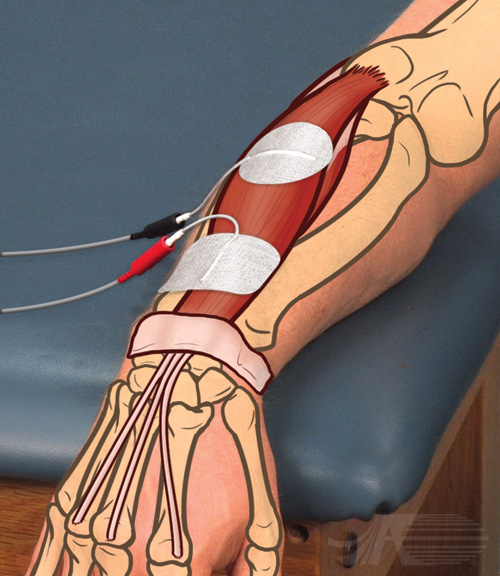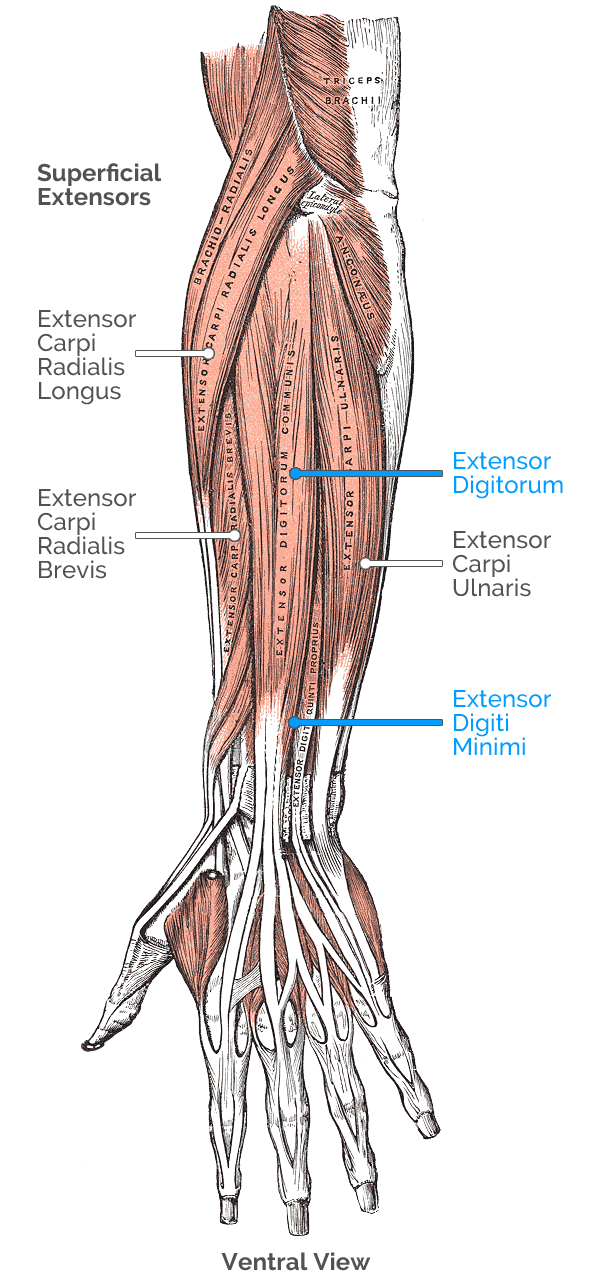Finger Extension
Electrode Placement

Application Instruction by Dr. Lucinda Baker
Electrode placement for isolated finger extension. The negative electrode has come down more distally on the forearm. The positive electrode remains over the extensor tendons.
Related Electrode Placements
Finger Extension
Video Instruction
Audio Transcript:
Electrode placement for isolated finger extension. The negative electrode has come down more distally on the forearm. The positive electrode remains over the extensor tendons. In this angle you can see the marking on the lateral condyle.
Finger extension is achieved with minimal wrist activation. Note that there is some thumb abduction, but it is also minimal.
Finger Extension
Muscle Anatomy

Muscles involved in finger extension:
Extensor Carpi Radialis Longus (ECRL)
Origin: Lateral supracondylar ridge of the humerus
Insertion: 2nd metacarpal base
Action: Abducts and extends wrist
Extensor Carpi Radialis Brevis (ECRB)
Origin: Common extensor tendon
Insertion: 3rd metacarpal base
Action: Abducts and extends wrist
Extensor Digitorum (ED)
Origin: Common extensor tendon
Insertion: Extensor expansion of 2nd to 5th middle and distal phalanges
Action: Extends fingers and wrist
Extensor Digit Minimi (EDM)
Origin: Common extensor tendon
Insertion: At the extensor expansion, located at the base of the proximal phalanx of 5th digit on the dorsal side
Extensor Carpi Ulnaris (ECU)
Origin: Common extensor tendon of the ulna
Insertion: Base of the 5th metacarpal
Action: Extends and adducts wrist
Finger Extension
Nerve Anatomy

Nerves involved in finger extension:
Extensor Digitorum (ED)
Nerve Innervation: Innervated by the posterior interosseous nerve which is a continuation
of the deep branch of the radial nerve as it passes through the supinator muscle
Extensor Digit Minimi (EDM)
Nerve Innervation: Innervated by the posterior interosseous nerve which is a continuation
of the deep branch of the radial nerve as it passes through the supinator muscle
This website uses cookies to analyze site traffic and provide you with the best experience possible. Learn more
This website uses cookies to analyze site traffic and provide you with the best experience possible.
Learn more
